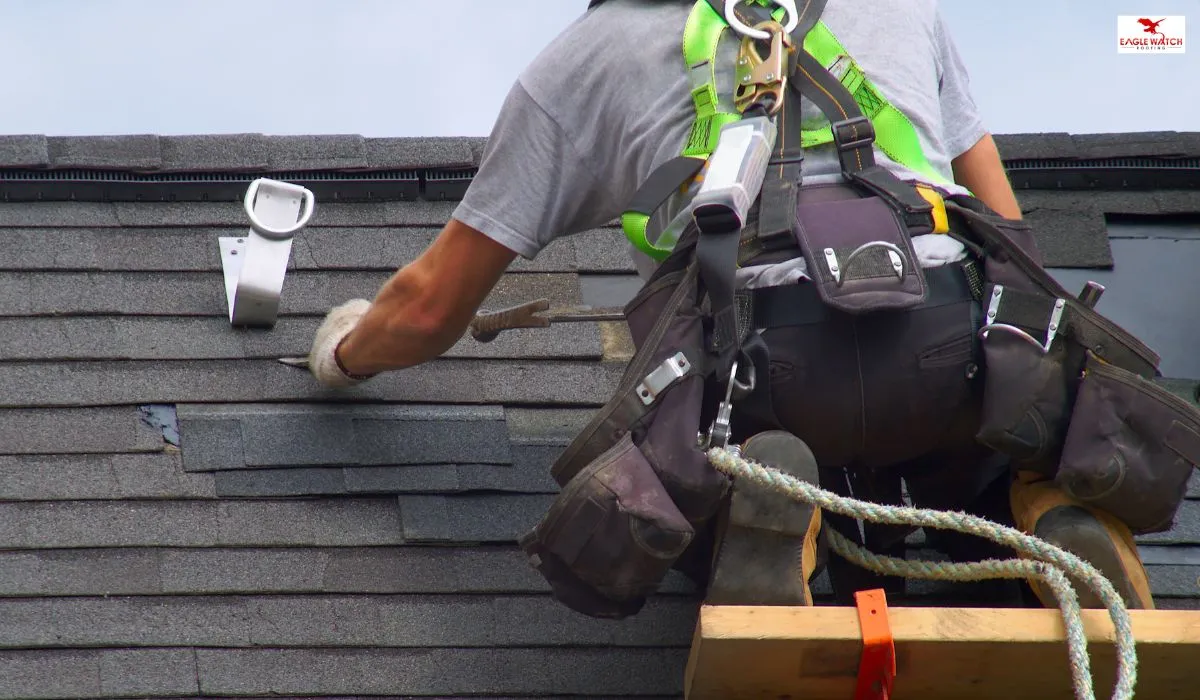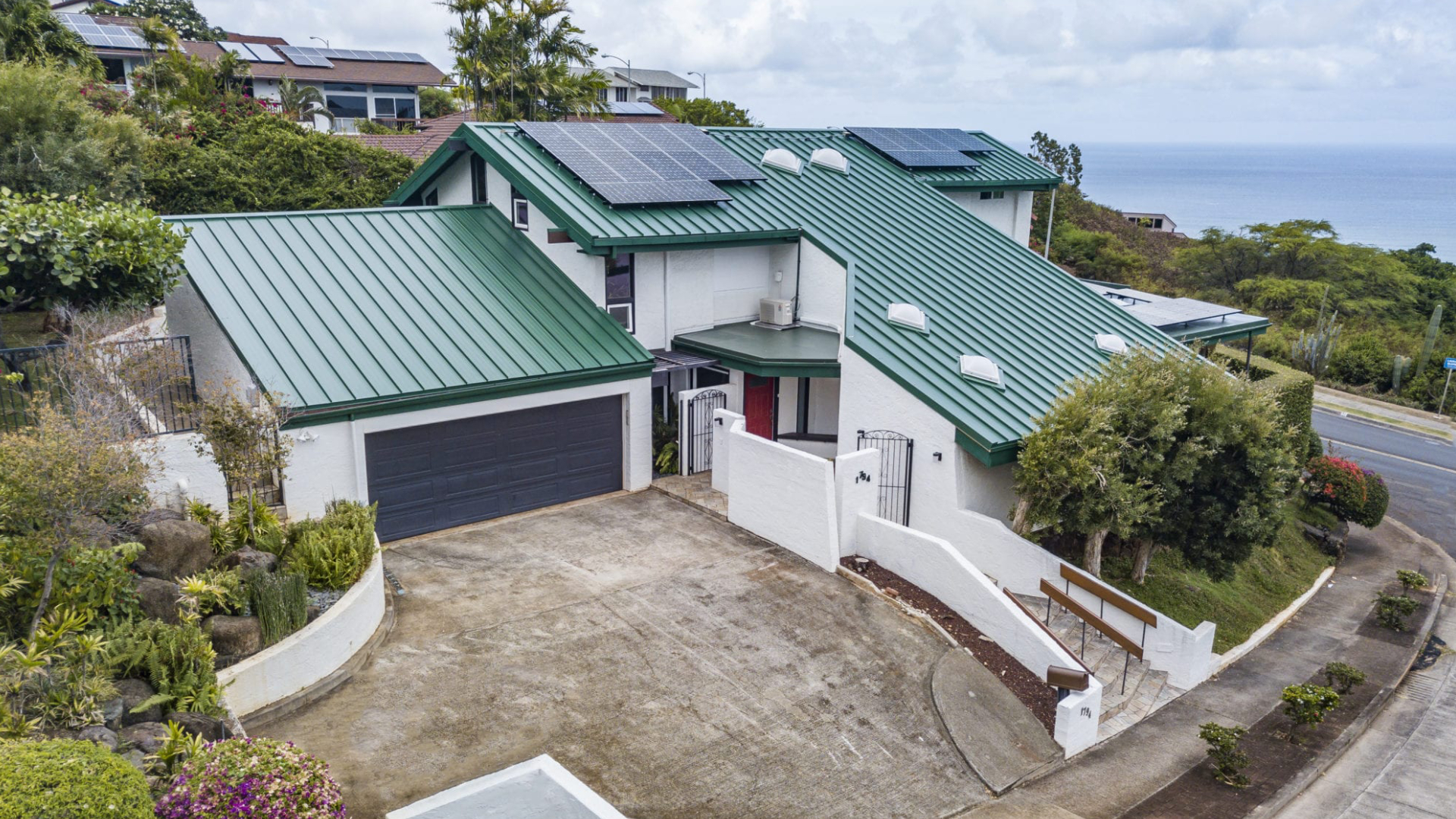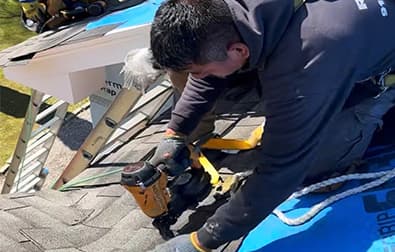Reveal Usual Roof Covering Troubles and How to Address Them Successfully
When it concerns your roofing, spotting issues early can conserve you time and money. You could notice water discolorations on your ceiling or broken tiles during your routine checks. Ignoring these indications can cause bigger problems down the line. Comprehending just how to determine and address these usual roof problems is essential for keeping your home's honesty. However what particular steps should you take to assure your roof covering stays in leading condition?
Recognizing Roofing System Leakages and Their Reasons

Following, examine your roof from the exterior. Seek missing or cracked tiles, rusted flashing, or harmed rain gutters. Pay focus to areas around smokeshafts, vents, and skylights, as these prevail leak sources. If you identify any of these problems, it's essential to address them quickly.
Throughout heavy rainfall, observe your roofing system for any type of merging water or drips. This can disclose leaks that could not be noticeable throughout completely dry problems. By remaining watchful and frequently examining your roofing, you can catch leakages early and secure your home from further damage.
Handling Missing or Damaged Roof Shingles
When you notice missing or damaged tiles, it's vital to act quickly to avoid further concerns. You'll want to determine the extent of the damages, repair any missing out on shingles, and consider preventive upkeep ideas to maintain your roofing system in leading shape. Taking these steps can conserve you money and time down the road.
Recognizing Tile Damage
Although shingles are developed to withstand the elements, they can still suffer damages over time, causing prospective leaks and pricey repair services. To identify shingle damage, beginning by evaluating your roof covering for missing out on, fractured, or crinkled tiles. Look for indicators of discoloration or granule loss, which can show damage. Take note of any kind of areas where roof shingles are lifting or buckling, as these can create susceptabilities. It's also important to examine for water stains or mold and mildew on your ceilings and wall surfaces, as these might signal leakages originating from damaged tiles. Frequently monitoring your roofing system, especially after severe weather, can help you catch issues early and keep the honesty of your home.
Fixing Missing Out On Shingles
After identifying roof shingles damage, the next step is addressing any kind of missing or damaged roof shingles quickly to prevent additional concerns. If you can, climb up onto your roof covering safely, wearing proper gear. Taking action swiftly will help preserve your roof's stability and extend its life-span.
Preventive Upkeep Tips
Just how can you maintain your roofing system in top shape and avoid shingles from going missing out on or getting damaged? Normal examinations are crucial. Examine your roofing at the very least twice a year and after serious climate. Look for indicators of wear, such as curling, breaking, or loosened shingles.
Maintain gutters tidy and devoid of particles to guarantee correct water flow and avoid tile damages. Trim looming branches to decrease the danger of them scratching versus your roof throughout tornados.
Take into consideration applying a protective sealant to prolong your tiles' lifespan. Lastly, if you see any type of concerns, resolve them quickly to prevent pricey repair work later on. Taking these preventative actions can save you money and time while assuring your roof covering remains durable and reputable.
Comprehending Roofing System Air Flow Issues
Correct roof air flow is important for preserving the durability and effectiveness of your roof system, as it aids regulate temperature and moisture degrees in your attic room. Without sufficient ventilation, you may deal with problems like too much heat build-up, causing early roof shingles wear and tear, or boosted humidity that can cause mold and mildew development and wood rot.
To assess your roof air flow, look for indications of getting too hot, such as distorted shingles or a warm attic room. Search for blocked vents, which can restrict air movement and catch heat. You must ensure your consumption and exhaust vents are balanced, permitting for proper air exchange.
Addressing these concerns without delay can secure your roof covering and save you from pricey fixings down the line. Remain positive in maintaining your roofing's air flow to secure your home.
Dealing With Roof Covering Moss and Algae Growth
While you might appreciate the all-natural look of moss and algae on your roofing, these microorganisms can lead to significant issues if left unchecked. Make use of a soft-bristle brush to gently scrub away the moss and algae, being careful not to damage your roof shingles.
Following, consider applying a specialized roofing system cleaner or a blend of water and bleach to eliminate staying spores. Rinse completely to avoid any chemical damages. In addition, mount zinc or copper strips along the ridge of your roof. As rain washes over these steels, it produces a safety obstacle against future development. Regular inspections and maintenance will help stop moss and algae from returning, guaranteeing your roof covering continues to be healthy for many years to find.
Fixing Tornado Damage and Wind Problems
After a storm, it's important to assess your roof for damage brought on by high winds and hefty rainfall. Start by checking for missing or broken tiles, as these prevail casualties. If you discover any, it is necessary to replace them promptly to stop leakages. Next, evaluate the flashing around smokeshafts and vents; harmed flashing can lead to water penetration.
Seek any type of sagging areas, which could indicate water buildup or structural issues. If you locate any kind of debris, like branches or leaves, eliminate them meticulously to stay clear of further damages. If your gutters are blocked, clear them to ensure proper drain.

For small repairs, you might manage it on your own, yet don't wait to call a specialist for comprehensive damages. Bear in mind, acting rapidly can conserve you from larger problems down the line, so take that analysis seriously and address any type of problems asap.
Recognizing Signs of Structural Damages
Just how can you inform if your roof is suffering from structural damage? Beginning by trying to find noticeable sagging or dips in your roofline. These indicators show that the underlying framework may be endangered. Next off, look for splits or voids in the walls or ceiling, as these can indicate moving or clearing up as a result of roof covering issues. Pay interest to leakages or water spots, particularly in areas where the roof covering meets walls. If you notice missing out on or damaged tiles, it's vital to address them rapidly, as they can expose your roof to additional damages. Likewise, examine your attic for any indicators of daytime glimpsing with, which could mean your roofing system's integrity goes to threat. Listen for uncommon creaking or popping audios, as they may show structural tension. If you notice any one of these indications, it's time to speak with a roofing specialist for a complete analysis.
Regular Upkeep Tips for Long Life

Routine Assessments Importance
Because a check this roofing system is your home's first line of defense against the aspects, routine evaluations are vital for maintaining its stability (roofing materials hawaii). You should check your roof covering at the very least two times a year, preferably in springtime and autumn, to catch potential concerns early. Seek missing out on or damaged shingles, indicators of leaks, and any debris that might cause troubles. Pay attention to areas around smokeshafts, vents, and flashing, as these are common weak places. If you discover anything unusual, don't wait to call a professional for a detailed assessment. Staying on par with these evaluations can prevent expensive repair work down the line and prolong your roof's life expectancy, ensuring your home stays safe for several years to find.
Correct Gutter Maintenance
Normal roofing evaluations normally lead to the relevance of appropriate gutter upkeep. Check your rain gutters for leakages or rust; they can trigger water damage to your roof covering and home. By complying with these pointers, you'll expand your gutters' life-span and secure your roof.
Frequently Asked Inquiries
Exactly How Can I Pick the Right Roof Product for My Home?
To pick the ideal roofing product for your home, consider environment, sturdiness, and appearances. Research study alternatives like asphalt shingles, steel, or floor tile. Assume concerning upkeep demands and spending plan to discover what matches you best.
What Are the Indications I Required a Roof Substitute Rather Than Repair Work?
If you see widespread leakages, sagging, or missing out on tiles, you might require a roofing system substitute. If your roof's nearing its life-span or has substantial damage, it's time to contemplate a full substitute instead of just repair work.
Exactly how Usually Should I Arrange Specialist Roof Covering Inspections?
You need to set up specialist roofing system assessments at the very least annually, preferably in spring or autumn. This assists capture prospective problems early, guaranteeing your roof covering remains in good condition and prolonging find out here now its lifespan.
Can I Set Up a New Roof Covering Over My Old One?
You can mount a brand-new roof covering over your old one, yet it's necessary to inspect regional building ordinance and guarantee the existing roofing system's condition is sound. This method can save time and money, but take into consideration potential problems.
What Is the Average Lifespan of Various Roof Covering Materials?
The average lifespan differs by product: asphalt shingles last 15-30 years, metal roofs can last 40-70 years, while tile or slate roofs might surpass 50 years. Choose carefully based on your environment and budget plan.
Conclusion
By remaining vigilant and addressing usual roof problems without delay, you can shield your home and expand your roofing's lifespan. Regularly evaluate for leakages, damaged shingles, and air flow issues, and take on moss or algae growth before it worsens - roofers oahu. After storms, look for any damages and make essential repair work. With a little regular maintenance, you'll not just protect your investment yet also enjoy assurance knowing your roof covering is in leading shape. Do not wait-- act now!